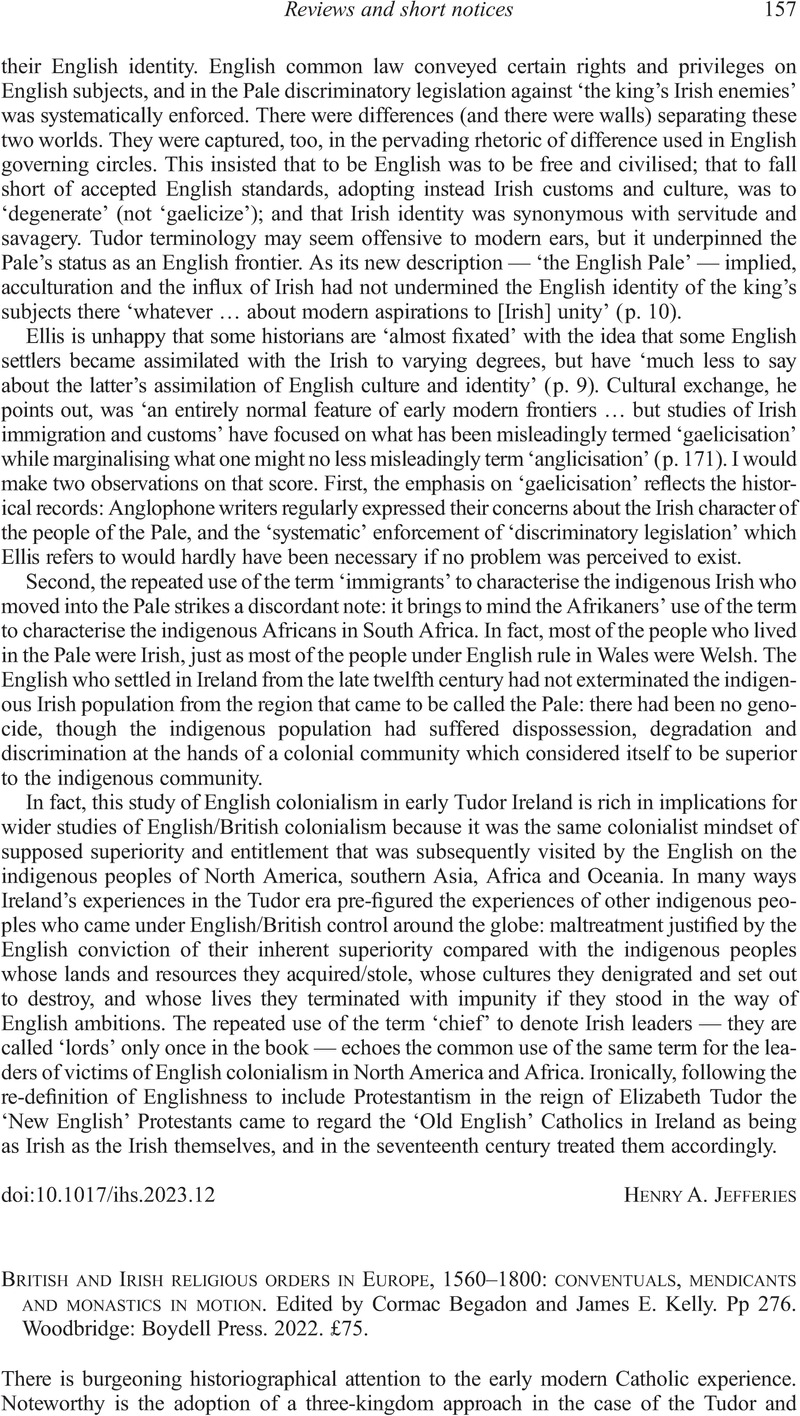No CrossRef data available.
Article contents
British and Irish religious orders in Europe, 1560–1800: conventuals, mendicants and monastics in motion. Edited by Cormac Begadon and James E. Kelly. Pp 276. Woodbridge: Boydell Press. 2022. £75.
Review products
British and Irish religious orders in Europe, 1560–1800: conventuals, mendicants and monastics in motion. Edited by Cormac Begadon and James E. Kelly. Pp 276. Woodbridge: Boydell Press. 2022. £75.
Published online by Cambridge University Press: 31 May 2023
Abstract
An abstract is not available for this content so a preview has been provided. Please use the Get access link above for information on how to access this content.

- Type
- Reviews and short notices
- Information
- Copyright
- Copyright © The Author(s), 2023. Published by Cambridge University Press on behalf of Irish Historical Studies Publications Ltd



